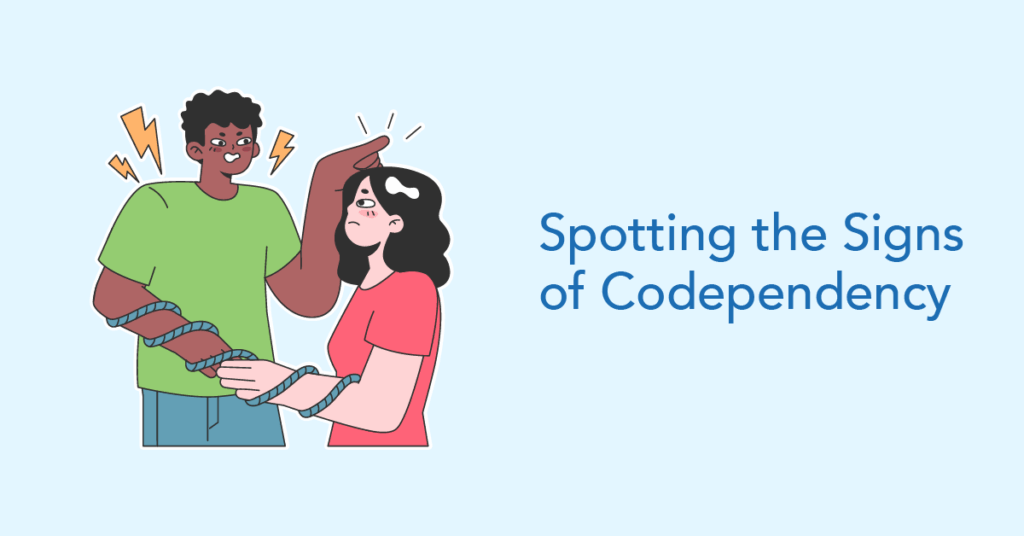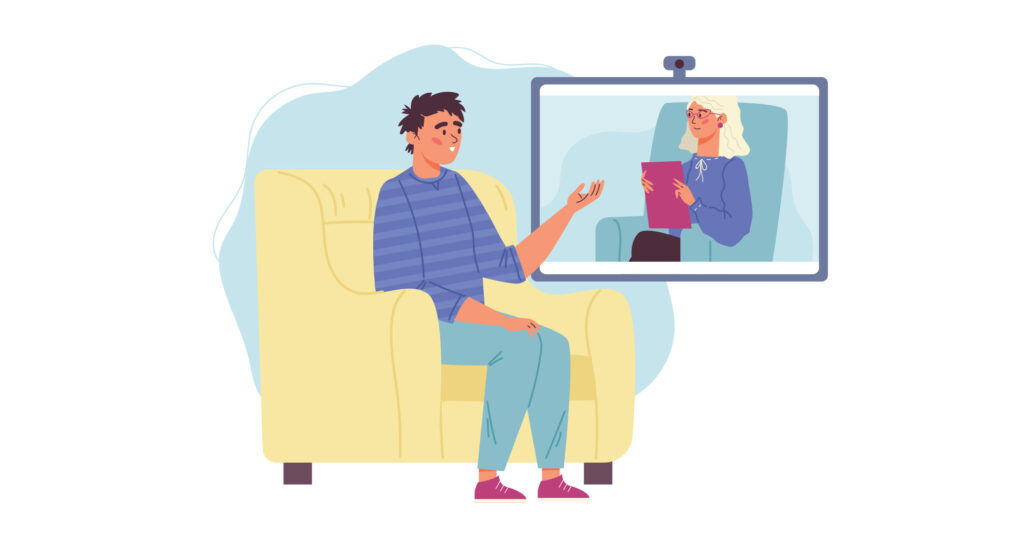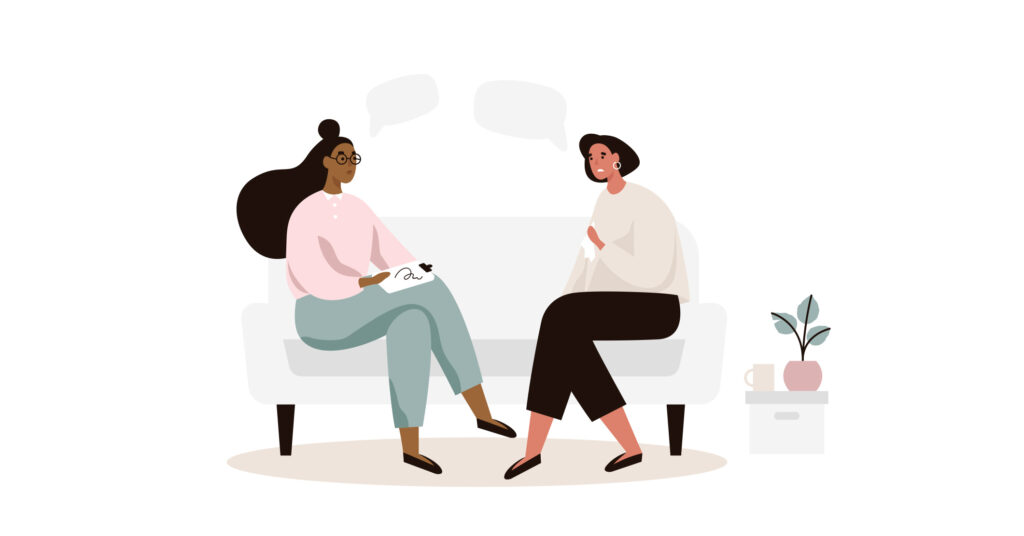Codependency often appears as:
- Prioritizing others over yourself
- Difficulty setting boundaries
- Low self-esteem tied to others’ approval
Codependency can sneak into relationships that start with the best intentions. When emotional caretaking becomes the foundation, it’s easy to lose your sense of self. With 70% of married couples today living together before getting engaged or married, boundaries can blur early — making codependent patterns harder to spot. This article will help you recognize the signs, understand where codependency comes from and learn how to break the cycle.
What Codependency Looks Like in Daily Life
Codependency often shows up in subtle ways that feel like love or responsibility, but underneath, there’s typically some kind of imbalance.
For example, someone might constantly rearrange their schedule to avoid upsetting their partner, even when it means neglecting their own needs. In this case, the codependent relationship might seem at first to be loving and the efforts cooperative; however, when the effort isn’t balanced, it ends up with one person holding most of the burden for that “cooperation.” Another example is a parent who jumps in to solve every problem for their adult child, feeling anxious or guilty if they don’t.
In romantic relationships, a codependent partner may avoid conflict at all costs. They might feel responsible for their partner’s moods or success. In friendships, codependency might mean always being the rescuer or emotional caretaker — offering support even when it’s draining and expecting the same level of dependence in return.
These behaviors can feel normal at first, but over time, they can lead to resentment, burnout and emotional disconnection.
Common Traits and Behaviors Associated With Codependency
Codependency isn’t just about the actions you or others take in relationships. It’s also about how you feel, as many codependent behaviors are driven by emotions such as fear, guilt or a need for approval. These are emotions that almost everyone experiences to some degree from time to time, but in a codependent relationship, they can be more consistent and intense.
Common traits and behaviors that can come from these emotions include:
- People-pleasing. Excessive people-pleasing means going out of your way to make others happy even when it comes at your expense or is bad for financial or other situations.
- Difficulty with boundaries. It feels so uncomfortable or difficult to say no to another person that you don’t, even when you should.
- Low self-esteem. Your sense of self-worth often feels tied up in how you perceive others feel or think about you.
- Inappropriate caretaking. You feel responsible for the problems of others, even if they don’t ask you to help them or their challenges aren’t actually related to you.
- Control in the guise of help. You often step into a “fixer” role in other people’s lives, establishing a belief system for yourself that they couldn’t function without you.
- Fears of abandonment. You recognize that you’re in an imbalanced or unhealthy relationship, but you remain due to fears of being alone or rejection.
Emotional Consequences for Both Parties
Codependency doesn’t just affect the person taking on too much. Over time, emotional strain can build up on both sides in ways that are easy to overlook until things feel overwhelming.
Chronic Resentment
The codependent person may begin to feel unappreciated, overworked or emotionally drained. Even if they don’t express it, this hidden frustration can quietly grow and damage the relationship.
Loss of Identity
When one person constantly puts their partner’s needs first, they may lose sight of their own goals, interests and values. It can feel like life revolves around someone else’s well-being.
Learned Helplessness
The person being cared for may become overly dependent and less confident in their own ability to make decisions or handle challenges. This can lead to stagnation and frustration on both sides.
Guilt and Shame
Both parties can experience guilt — one for not doing “enough” and the other for needing so much support. This emotional loop can be hard to break without help.
Root Causes: Trauma, Addiction and Family Dynamics
Codependency doesn’t typically develop out of nowhere. It’s often rooted in early experiences that shape how you relate to others. Understanding where these patterns come from can help you address and change them.
For many people, codependent behaviors start in childhood. Growing up in a home where love was conditional or emotional needs weren’t met can teach a child to prioritize others just to feel safe or accepted. Children who were expected to take care of their parents emotionally may grow up believing their worth is tied to how well they support others.
Addiction can also play a major role. In families with substance use issues, roles can shift to keep the peace. For instance, a child might learn to “manage” a parent’s addiction by becoming overly responsible, emotionally attuned or self-sacrificing.
Even in households without addiction or overt trauma, unhealthy family dynamics — like strict control or fear of conflict — can lay the groundwork for codependency.
Recognizing these roots isn’t about blame. It’s about awareness and giving yourself permission to unlearn what no longer serves you.
How to Break the Cycle and Set Boundaries
Breaking the cycles set by codependent behavior can take time, but each small step can take you in the direction of lasting change. Here are a few tips to get you started:
- Practice saying no without guilt — it may help to start saying no to small things or to someone who’s “safe.”
- Work on recognizing and challenging negative self-talk.
- Focus on your own goals and interests — if you don’t have a goal or hobby separate from your loved one, try to implement one.
- Work on letting others take responsibility for their own choices.
- Consider talking to a therapist to work on your codependent behaviors.
Find Help Today
If you’re ready to get help in making this change but don’t know where to start, contact the Mental Health Hotline today. The caring representatives can help you connect with relevant resources in your area.
Editorial Team
-
 Written By: Mental Health Hotline
Written By: Mental Health HotlineMental Health Hotline provides free, confidential support for individuals navigating mental health challenges and treatment options. Our content is created by a team of advocates and writers dedicated to offering clear, compassionate, and stigma-free information to help you take the next step toward healing.
-
 Reviewed By: Dr. Daphne Fatter
Reviewed By: Dr. Daphne FatterDaphne Fatter, Ph.D., is a licensed psychologist, and international speaker dedicated to providing education on integrative trauma-informed therapies. She is the author of Integrating IFS (Internal Family Systems) into EMDR therapy. She is EMDR Certified and an EMDRIA Approved Consultant and has almost 20 years of experience providing EMDR. She is also IFS Certified and an Approved...


